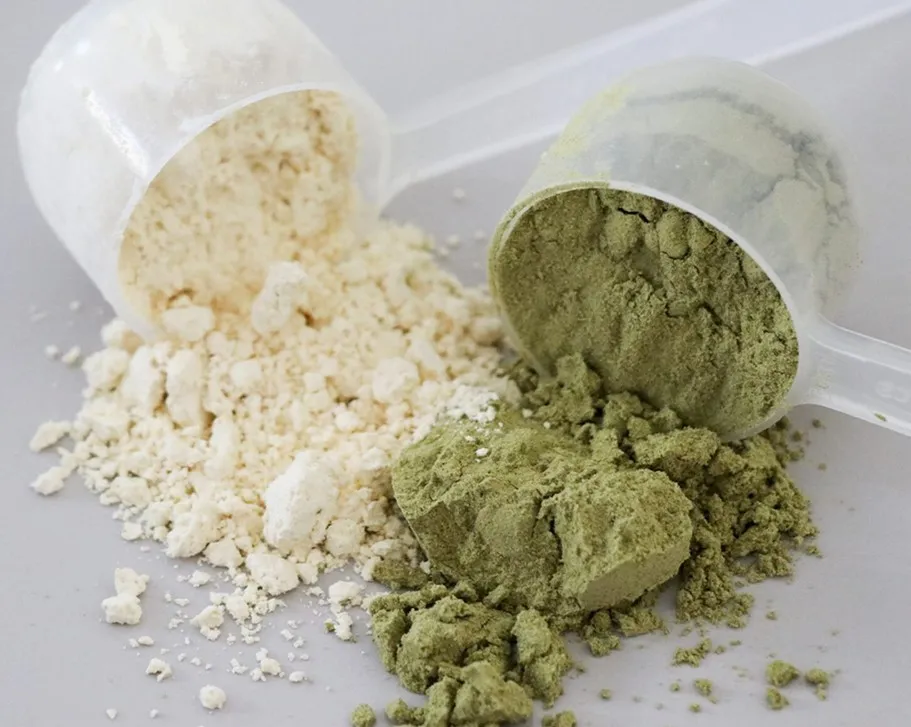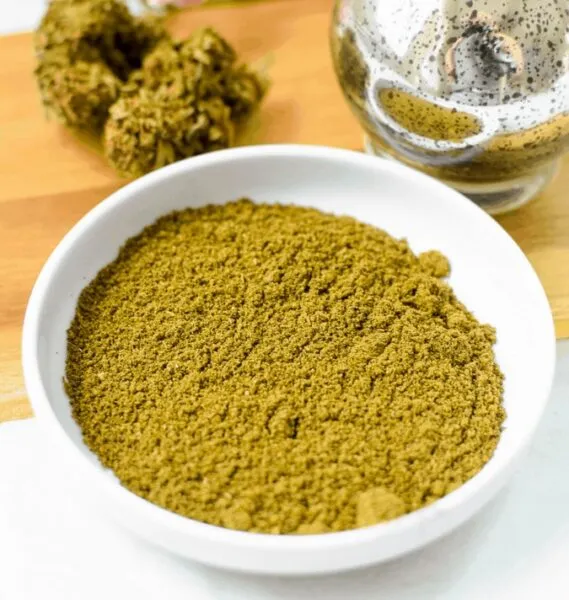If you’re an avid smoker, you’ve probably tried blunts and bowls. And if you’re into edibles, then you know the drill with those too. But have you ever taken THC powder? This water-soluble preparation hits much faster than standard edibles, and boasts much higher bioavailability.
With THC powder, you don’t have to wait for edibles to kick in or endure a disappointing 4% bioavailability. This water-soluble form of THC hits within minutes and is much more easily absorbed by the body. And the best news? You can make it at home with no trouble.
Cannabis Edibles: A Rapidly Evolving Sector
With the legalization of cannabis across many parts of the world, edibles are also becoming more popular and diverse. People have been adding THC to food items like brownies and pasta sauce for decades now, but as acceptance grows, we are seeing even more innovative ways to consume cannabis.
However, until recently, these recipes were inaccurate and had long wait times. But, like all technologies, cannabis edibles are becoming increasingly faster, more efficient, and user-friendly.
From Hours to Minutes
When taking an edible cannabis product, the effects will differ from smoking or vaping. The THC enters your bloodstream faster when inhaling, while eatingoral cannabinoids are subject to first-pass metabolism in the stomach and liver before they enter systemic circulation– making it take longer for edibles to instigate feelings of being high. It is common to wait 30 minutes up to two hours.
Some companies have become innovative and decreased the latency period. Those who are pioneers in this field have formulas that are fast-acting and edible, containing emulsifiers and micro-sized particles. This takes effect in no more than 10 minutes.
Breaking Cannabinoids’ Hydrophobic Shackles
All recipes for cannabis edibles require a fat source, like butter or coconut oil, because cannabinoids are lipids that repel water. In other words, they don’t enter the bloodstream quickly. However, new edible innovations use carbohydrate coatings to make cannabinoids water-friendly so that they can quickly penetrate bodily tissues and enter circulation.
Improving Bioavailability
Not only have these impressive steps in the edibles industry decreased the onset of oral cannabis’ effects, but they’ve also used emulsifiers to increase its bioavailability.
Though you may feel the effects of THC after eating a brownie, your body only absorbs 4-12% of it. However, modern edibles have a bioavailability higher than 60%, meaning you would need to consume less product for the same response.
What Is Cannabis Powder?
Cannabis companies are in a race to come up with products that can be consumed as edibles. This new wave of demand for edible cannabis products has spurred these companies to create patent-pending technologies designed to deliver cannabinoids in gummies, beverages, and other food items. Dispensaries located in states where cannabis is legal have already started stocking their shelves with these types of innovations. However, even if you don’t have access to legal marijuana or only grow your own at home, you can still make fast-acting edibles using cannabis oil powder.
The recipe below will show you how to make cannabis oil powder, which at first may sound like an oxymoron. The process involves combining cannabis oil with a carb-rich emulsifier, causing water-hating cannabinoids to behave more like they love water. Cannabis powder features improved bioavailability and a quicker onset time than other methods.
It’s Water-Soluble
Did you know that water-soluble cannabinoids don’t only come from laboratories? By adding the appropriate ingredients, anyone can make cannabinoids water-soluble. For example, cannabis powder is created by mixing cannabis oil (a mixture that does not mix well with water) and an emulsifier together. This allows the cannabinoid molecules to interact positively with water molecules.
As the human body is mostly water (comprising around 60%), this allows THC and other chemicals to bind with our system when they enter orally.
What Are the Benefits of Cannabis Powder?
Not only does weed powder have better bioavailability and a faster onset, but it is also a robust product with loads of potential. Budding cannabis chefs can unleash their creativity with THC powder by adding it to a host of tasty recipes. Not only will it go down well in a variety of sweet and savoury food choices (from banana bread to soups), but users can effortlessly add a teaspoon to their afternoon tea or coffee for some fast-acting elevation.
The edible gummies’ rapid onset closely immitates smoking and sublingual administration, as users can dose more quickly and in a less obvious way. For example, compared to taking CBD oil from a dropper bottle or disappearing to smoke weed, eating an infused brownie with lunch appears much more low-key.
It’s Easy to Dose
Learn how to dose weed powder so that you can easily and effectively consume THC. It’s easy to handle, doesn’t stick to anything, and you can calculate how much THC your powder contains in a single teaspoon with our guide below.
The Future of Cannabis Edibles
With the rise in cannabis awareness and legalization, many people are turning to edibles as a safer and healthier alternative to smoking or vaping. Cannabis-infused water, coffee, tea, and snacks are becoming increasingly popular among health conscious users who want to avoid the known risks associated with traditional methods of consumption.
Make Your Own Cannabis Powder
Now that you know more about cannabis powder, it’s time to try making your own! If you think adding THC powder to your coffee would be preferable to smoking from a bong, then get the supplies listed below and follow the recipe.
Equipment
- Mason jar
- Bowl
- Mixing spoon
- Sieve
- Scales
- Grinder
- Cheesecloth
- Baking paper
- Baking tray
- Saucepan
Ingredients
- Cannabis strain of choice (5g)
- 32g coconut oil
- 150g maltodextrin
- ½ teaspoon sunflower lecithin powder (emulsifier)
Directions
- Use your scales to measure out 5g of cannabis.
- Grind your buds into a coarse powder using your grinder.
- Place a sheet of baking paper on an oven-safe tray. Then, evenly distribute the ground bud across it.
- Before you get started, preheat your oven to 115℃. Then, place your weed inside for approximately 45 minutes to decarboxylate non-psychotropic THCA into “activated” THC. Remember to stir the weed halfway through.
- Place your weed into the Mason jar; add the coconut oil and sunflower lecithin powder, and stir thoroughly.
- Fill a saucepan with water halfway and screw the lid onto the jar. Boil for two hours, making sure to add more water if it evaporates quickly.
- Strain the mixture through a cheesecloth into a mixing bowl. Add the maltodextrin and mix thoroughly (this ingredient is high in carbs and helps thin out the mixture).
- Use a sieve to powder the baking paper and create a fine consistency.
- Store in a clean and dry Mason jar.
How to Dose Your Weed Powder
You’ve now created a water-soluble THC powder that you can add to any food or beverage, or use on its own. But before you get too excited and gung-ho, it’ll be helpful to learn how to dose your weed powder so you don’t accidentally take too much.
The strength of your powder will depend on the THC content in your chosen strain; however, you need to remember that some THC is always lost during decarboxylation. To make it simpler for you, we did the math and found out how much THC is in a teaspoon of powder depending on the most common percentages of available strains (when using 5 grams of weed):
A teaspoon of THC powder is approximately 4 grams. You can use this amount to calculate a more accurate dose by using sensitive scales. For example, if you have 4 grams of weed powder from a strain with 20% THC, then that would be 10mg of THC. If you want a less potent dose, measure out 2 grams for 5mg of THC instead.
Things to Consider With THC Powder
Water-soluble THC is fairly new and not a lot is known about how it affects the body. Edibles are notorious for their strength; as they travel through the liver, THC converts into 11-hydroxy-THC which creates a much more intense high.
When you consume water-soluble THC, much of it will travel through your liver. Some will also diffuse into other tissues in your body, such as your mouth. Furthermore, water-soluble THC powder has a higher bioavailability than other methods of consuming THC. This means that you need less material to get you stoned. In addition to all this, effects from consuming water-soluble THC can be felt within around 15 minutes instead of 1–2 hours.
The way this method of marijuana ingestion affects people can differ, and it also has a different feeling than smoking or eating weed. To be safe, start with a low dosage and work your way up until you find the amount that works best for you.
How to Use Your THC Powder
The options are nearly limitless when it comes to what you can do with weed powder. If a recipe calls for maltodextrin, try substituting 1g of cannabis powder instead. It’s also great in soups, salad dressings, and sauces or mixed into beverages such as tea and coffee. Add a teaspoon into smoothies for an extra cannabinoid boost.
Weed Powder: A New Way to Get High
If you’re looking for an intense high that will take effect quickly, then making THC powder from weed is a great option. Weed powder offers a compelling means of getting high. It sits somewhere between smoking and traditional edibles when it comes to onset, and vastly outperforms cannabutter-infused goodies in terms of bioavailability.



